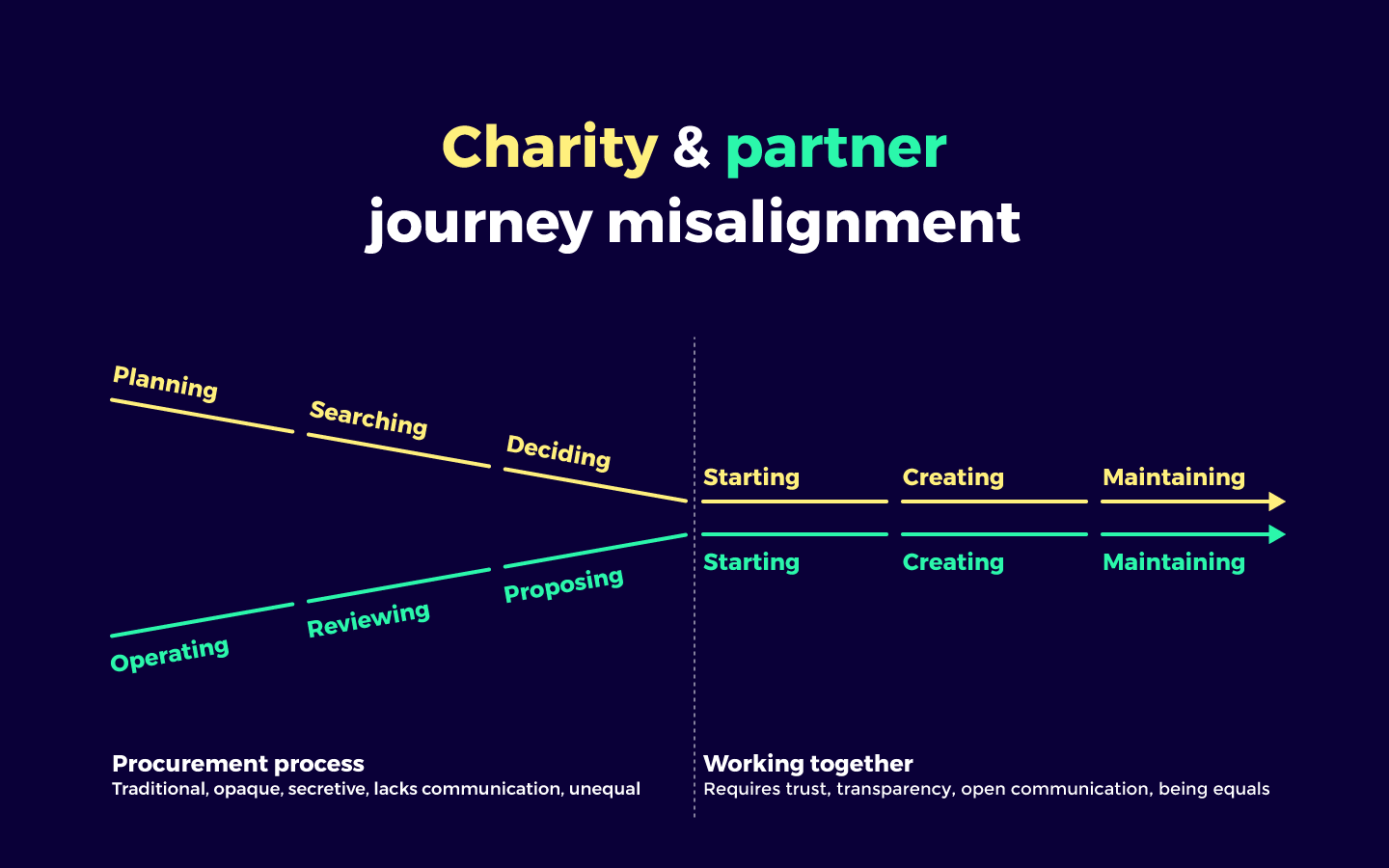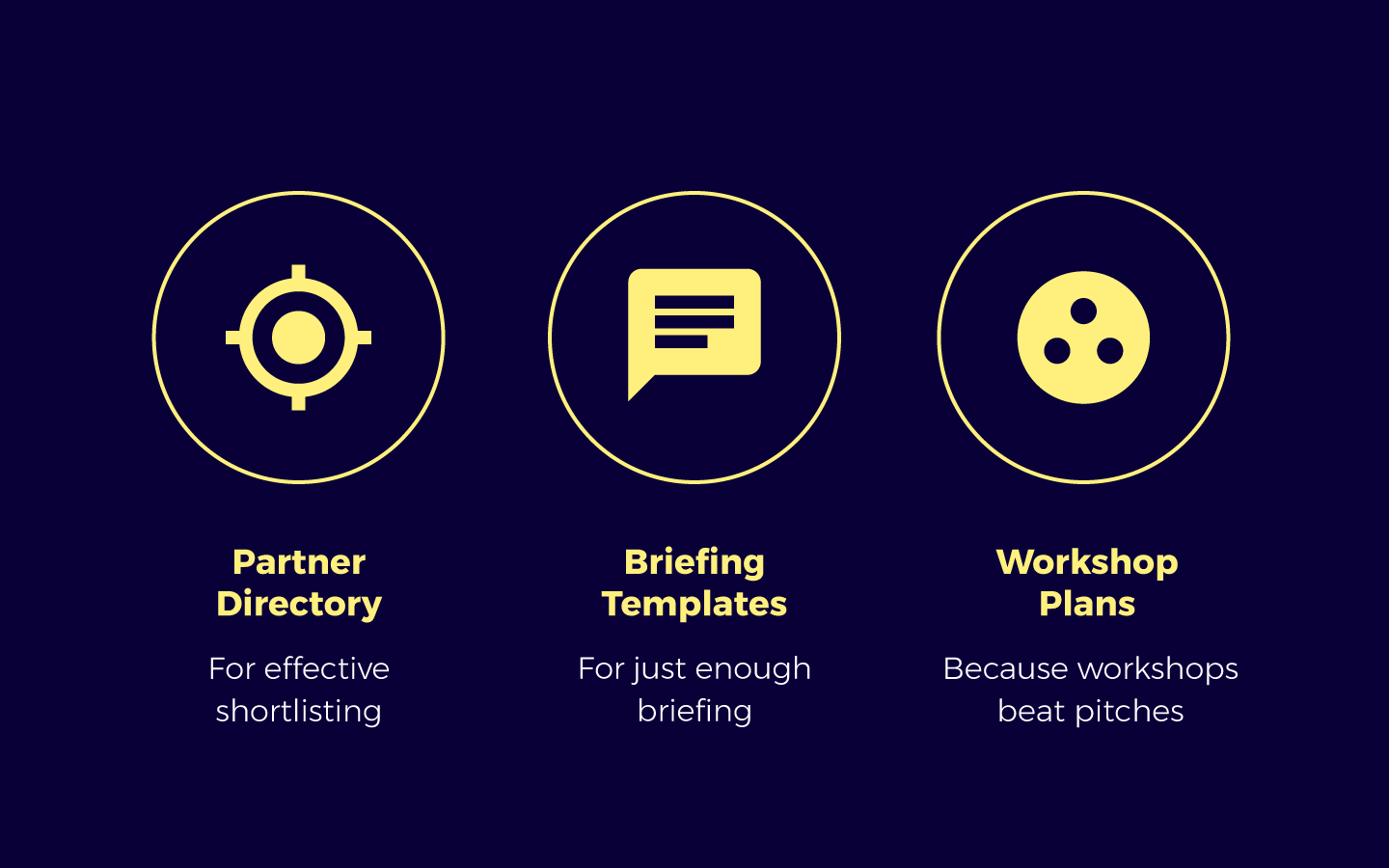

How your charity can hire the right digital agency
Awdur: Andy Bell;
Amser Darllen: 3 munud
Mae hwn yn adnodd agored. Mae croeso i chi ei gopïo a'i addasu. Darllenwch y telerau.
Os hoffech gymorth pellach gyda'ch her ddigidol, trefnwch sesiwn am ddim gyda DigiCymru
It is a truth widely acknowledged that the relationship between a charity and its agency is often pretty dysfunctional. We keep hearing that ‘in the charity sector, the agency model is broken’.
At Catalyst, we launched a project called Dovetail to research what the problem is, and we’ve started to develop some solutions.
Here’s what our research found:
Good digital work is impossible without an excellent relationship
Charities and agencies both agree the relationship is key. Digital product development is a delicate, collaborative process. Both sides must trust each other, be on the same wavelength and have figured out who does the proverbial dishes.
The dating process is all wrong
The typical process to hire an agency looks like this:

The charity typically keeps the agency at arm’s length through the hiring process. The agency gets emailed a request for a proposal. The agency works on its own to create a killer presentation. The agency pitches for a slick half-hour. The agency and the client only get intimate when they start working together. At this point, they find they are incompatible. Embarrassing!
This process stems from the desire to be fair. But the result is often misery, followed by divorce.
A better way
Dovetail is a 3-step plan to create better charity/partner relationships:

1. Partner Directory — effective shortlisting
Imagine you are Josephine Bloggs. You’ve been given responsibility for your charity’s sparkly new digital project. Your first step is to create a shortlist of seven agencies. How do you ensure these are the best possible seven?
From our research, fit is key. Our directory of charity partners displays information that gives a feel for the agencies. Our ambition is to create something closer to a dating site than to the Yellow Pages.
Dovetail can’t prevent you from going on bad dates. But if it helps you select a better shortlist, the average date should be better.
2. Briefing Template — just enough briefing
Oh my gosh, I have responded to some bone-headed Request For Proposals in my time.
RFPs that suck the life out of you.
RFPs where you crawl through pages answering questions that are tangential to — or utterly detached from — the crux of the project.
RFPs that make you wish you could jump through a bunch of real-life hoops because at least it would be a workout. Instead, you are stuck indoors, typing mojo-draining nonsense.
Briefing Templates (coming somewhen!) help you construct a brief that allows agencies to quickly showcase their relevant skills, and give you a structure to assess their responses.
3. Workshop Plans — practice beat pitches
If you follow steps 1 and 2 you’ll have a shortlist of agencies who fit your challenge. But there’s one more step.
We all agree that the hiring criteria shouldn’t be the glitziness of the agency’s pitch. But what should it be? It should be “do we work well together when facing real problems?” There will be hundreds of problems in any product development journey.
Create a microcosm of this situation. Joyfully, this isn’t Victorian England. You can hop into bed without long-term commitment. See if you make magic when you get together.
– This post originally appeared on Medium, here
Wedi'i gomisiynu gan Catalyst
